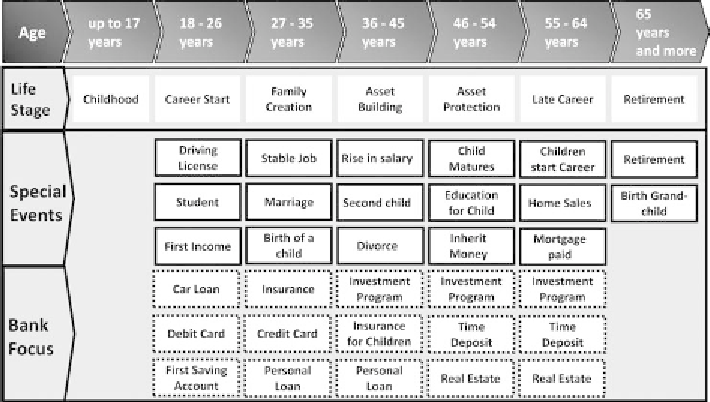Database Reference
In-Depth Information
In the data mining framework, demographic segmentation is mainly used
to enhance insight into the revealed behavioral, value-, and propensity-based
segments.
The life-stages are defined by special events that determine a person's
priorities and main concerns, such as the birth of their first child, a significant
increase in income, and so on. Life-stages present opportunities for promoting
products and services that address the particular needs of customers.
An organization should try to identify the important life-stage events and
link them to consuming behaviors. For example, in banking, the birth of a child
is strongly related to consumer and/or mortgage loan purchases. A significant
increase in annual income almost always creates investment and insurance needs
and opportunities.
Since quite often the fields required for life-stage segmentation are not
available in the organization's customer databases, analysts usually try to link the
age of customers to specific life-stage events.
An example from the banking industry is shown in Figure 5.3.
Figure 5.3
Life-stages in banking.
NEEDS/ATTITUDINAL-BASED SEGMENTATION
Needs/attitudinal-based segmentation is used to investigate customers' needs,
wants, attitudes, perceptions, and preferences. Relevant information can only be

Search WWH ::

Custom Search